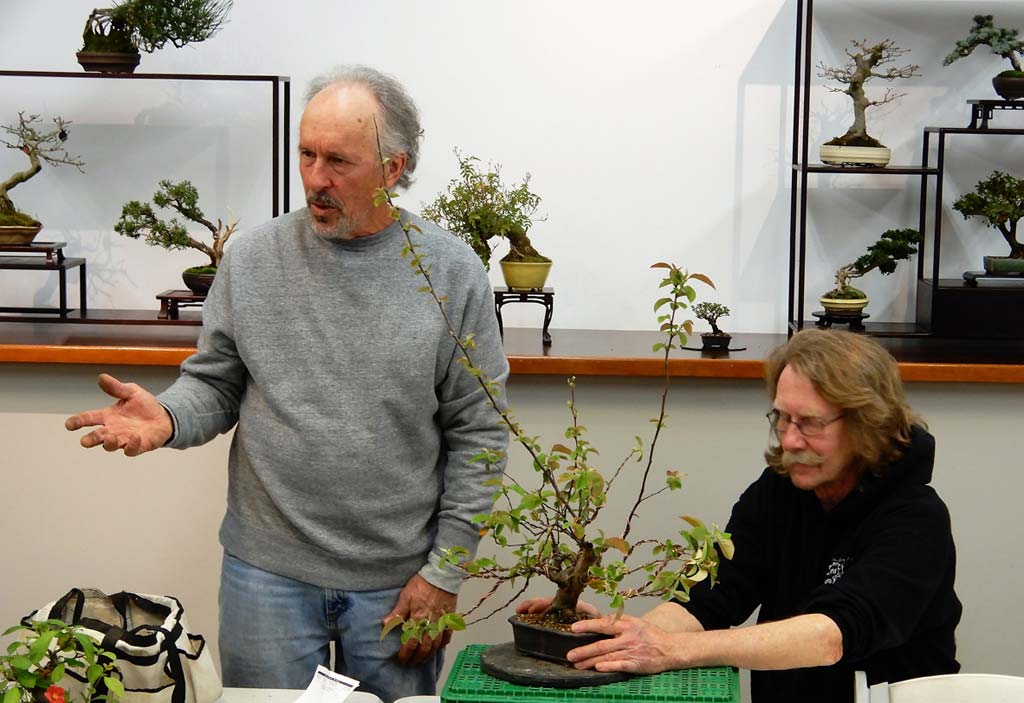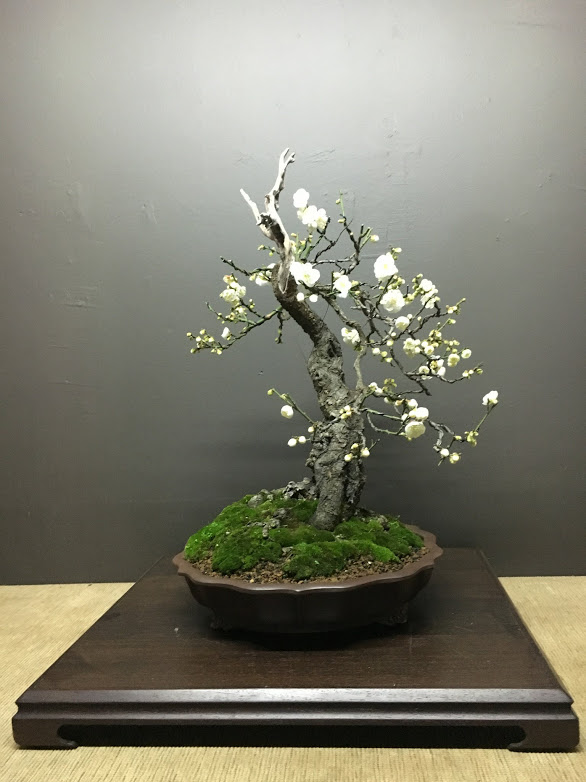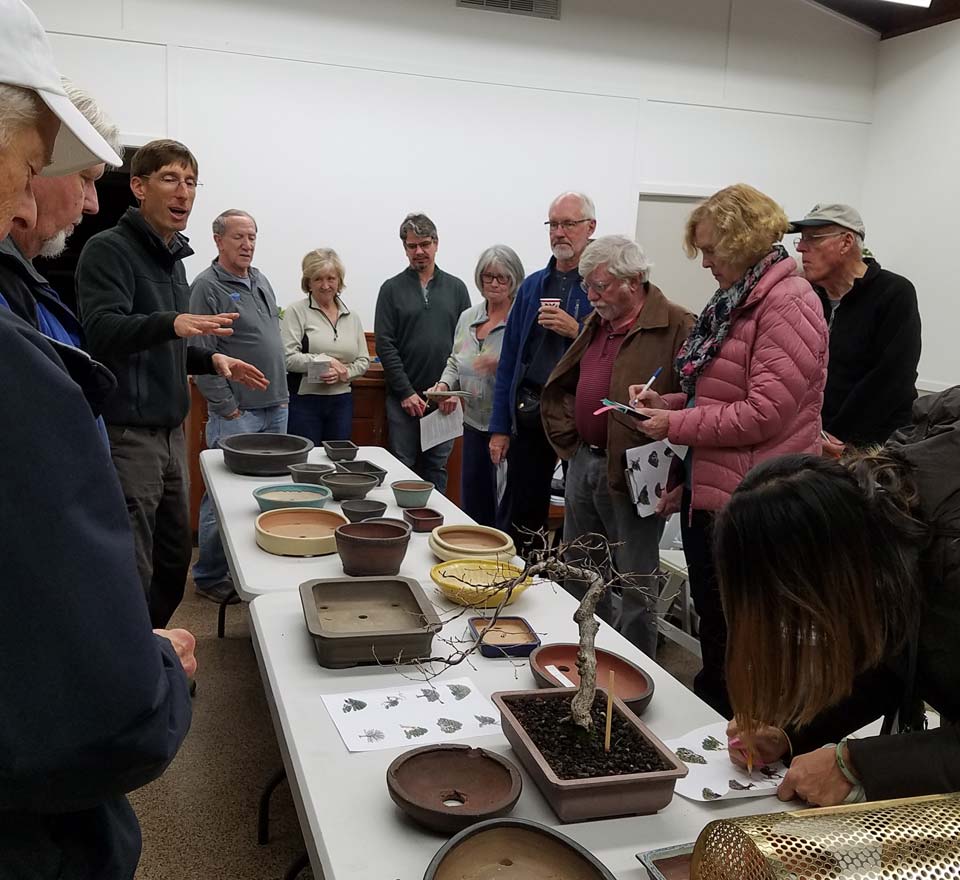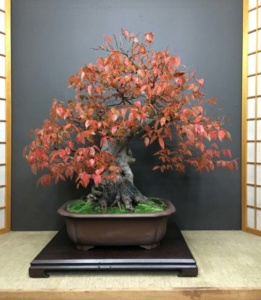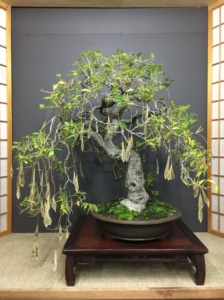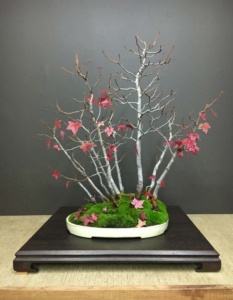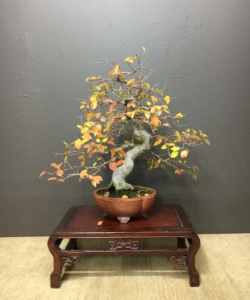Shohin bonsai was the topic in March when Bill Castellon, an accomplished bonsai artist who used to conduct shohin workshops for our club once upon a time, gave us a highly informative lecture and demonstration on the topic of these smallest of our small trees. Clearly an extremely knowledgeable artist and horticulturalist, Bill was able to discuss a wide variety of bonsai topics in addition to shohin as he introduced us to and proceeded to transform a Chinese quince, which was raffled off at the end of the night. As a bonus, he also discussed and raffled off a black pine.
Bill began the evening with some general guidelines for shohin, then spent 30 minutes discussing some of the key points to be considered when displaying them. He pointed out that while shohin are typically defined as small trees under 20 centimeters (approximately eight inches) in height, with smaller pots than regular bonsai, simple definitions are often inadequate — a common problem in bonsai, it seems. You cannot chop all but the bottom eight inches from a larger bonsai and call it a shohin any more than you can put a shrub in a pot and call it bonsai. In addition to the subtle qualities that define bonsai, there are certain stylistic nuances unique to shohin. And Bill was there to show us a few development techniques adapted specifically to coax our trees into convincing depictions of old trees that can fit in one of our hands.
The classic shohin setup for a Japanese bonsai show — Kokufu being the gold standard of shows — is to have a multi-compartment box-stand containing several trees, along with an accent plant and a companion or supporting tree that are placed off to one side of the box-stand. Applying the triangular ideal to plan the layout, one should place the strongest trees so that they occupy the corners of the triangle. Along with numerous trees he brought with him, Bill used his own stands, props, and photographs from Kokufu show books to illustrate these and several other points relevant to showing shohin trees.



